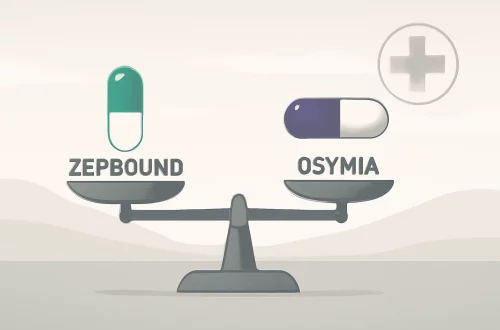
Understanding Bute Drug Use in Horses: Benefits and Risks Explained
The use of medications in equine care has always been a topic of significant interest and debate among horse owners, trainers, and veterinarians. Among these medications, phenylbutazone, commonly known as Bute, has garnered attention for its effectiveness in managing pain and inflammation in horses. This non-steroidal anti-inflammatory drug (NSAID) has been a staple in equine medicine for decades, particularly in the context of treating musculoskeletal issues, which are prevalent in performance and racehorses.
Despite its benefits, the use of Bute is not without controversy. Concerns about its long-term effects, potential side effects, and implications for horse welfare have sparked discussions within the equestrian community. As horse owners seek to ensure their animals are healthy and competitive, understanding the complexities surrounding Bute use is crucial. This includes recognizing when it is appropriate to use this medication, the benefits it offers, and the potential risks involved. With a careful and informed approach, horse owners can make better decisions regarding their horse’s health, ultimately leading to improved performance and well-being.
What is Phenylbutazone and How Does It Work?
Phenylbutazone, often referred to as Bute, is a non-steroidal anti-inflammatory drug (NSAID) primarily used to alleviate pain and reduce inflammation in horses. This medication works by inhibiting the production of certain enzymes involved in the inflammatory process, specifically cyclooxygenase (COX) enzymes. By blocking these enzymes, Bute effectively reduces the formation of prostaglandins, which are compounds that promote inflammation, pain, and fever.
Originally developed for human use, Bute has become a vital part of veterinary medicine, especially in treating conditions such as arthritis, laminitis, and other musculoskeletal disorders. It is typically administered in either oral or injectable form, allowing for flexibility depending on the horse’s condition and the veterinarian’s recommendation.
One of the key advantages of Bute is its rapid onset of action. Within a few hours of administration, horses often experience significant relief from pain and discomfort, allowing them to return to normal activities more quickly. This is particularly important for competitive horses that require prompt recovery from injuries or strains.
However, while Bute is effective, it is essential to use it judiciously. Long-term use or incorrect dosing can lead to serious side effects, such as gastrointestinal ulcers, kidney damage, and bone marrow suppression. Therefore, it is crucial for horse owners to follow their veterinarian’s guidelines and not exceed the recommended dosages. Regular monitoring and check-ups are also advisable to ensure that the horse remains healthy while on this medication.
Benefits of Using Bute in Equine Care
The primary benefit of using phenylbutazone in horses is its ability to provide effective pain relief and reduce inflammation. This can significantly enhance a horse’s quality of life, especially for those suffering from chronic pain or acute injuries. When used appropriately, Bute can facilitate quicker recovery times, allowing horses to return to their training regimens or competitive events without prolonged downtime.
Another notable advantage is the drug’s availability and ease of use. Bute is relatively inexpensive compared to other pain management options, making it accessible for many horse owners. Its versatility also means it can be used in various situations, from post-surgery recovery to managing chronic conditions like arthritis.
Additionally, Bute has a well-established history in equine medicine, which means that veterinarians are generally familiar with its effects and potential side effects. This familiarity can lead to more informed decisions and better outcomes for the horse. Furthermore, the drug’s efficacy in reducing fever makes it a valuable tool for managing infectious diseases in horses, providing not just comfort but also aiding in the overall health management of the animal.
However, it is vital to remember that while Bute offers significant benefits, it should not be viewed as a one-size-fits-all solution. Each horse’s health status, age, and specific condition must be taken into account when considering this medication. Consultation with a veterinarian is crucial to determine the appropriateness of Bute for a particular horse and to monitor its effects closely.
The Risks and Side Effects of Bute Administration
While phenylbutazone is renowned for its benefits, there are associated risks and potential side effects that horse owners must be aware of. One of the most significant concerns is the risk of gastrointestinal issues. Prolonged use of Bute can lead to the development of ulcers in the stomach or intestines, which can cause severe pain and discomfort for the horse. Symptoms of gastrointestinal distress may include colic, diarrhea, or a noticeable change in appetite.
Kidney damage is another serious concern associated with the long-term use of Bute. This risk is particularly pronounced in dehydrated horses or those with pre-existing renal conditions. Kidney function should be closely monitored, especially in horses receiving Bute for an extended period. Regular blood tests can help assess kidney health and ensure that the horse is not experiencing adverse effects from the medication.
Additionally, Bute can have implications for bone marrow function. In some cases, it may lead to a decrease in red blood cell production, which can result in anemia. Signs of anemia may include lethargy, weakness, and pale mucous membranes. If any of these symptoms occur, immediate veterinary attention is necessary.
Another important consideration is the legal and ethical implications of Bute use in competitive horses. Many equestrian organizations have strict regulations regarding the use of medications in competition, and Bute is often banned or restricted in racing and other performance events. Horse owners must be aware of these rules to avoid disqualification or penalties.
In conclusion, while phenylbutazone can be a valuable asset in managing equine pain and inflammation, it is essential to weigh the benefits against the potential risks. Responsible use, under veterinary guidance, is crucial to ensuring the health and well-being of the horse.
Best Practices for Bute Administration in Horses
To maximize the benefits of phenylbutazone while minimizing risks, horse owners should adhere to best practices when administering this medication. First and foremost, it is essential to involve a veterinarian in the decision-making process. A veterinarian can help assess the horse’s condition, determine the appropriate dosage, and establish a treatment plan tailored to the horse’s specific needs.
Proper dosing is critical. Bute dosages typically depend on the horse’s weight and the severity of the condition being treated. Overdosing can lead to severe side effects, while underdosing may not provide adequate pain relief. Therefore, following the veterinarian’s instructions meticulously is paramount.
Before starting Bute, it is advisable to conduct a thorough health evaluation of the horse. This should include blood tests to assess kidney function and overall health. Regular monitoring during treatment is equally important, ensuring that any adverse effects are detected early and addressed promptly.
When administering Bute, consider the horse’s hydration status. Dehydration can increase the risk of kidney damage, so ensuring that the horse has access to fresh water at all times is essential. Additionally, feeding the horse a balanced diet can help mitigate some gastrointestinal risks associated with NSAID use.
If the horse exhibits any unusual symptoms such as changes in appetite, behavior, or signs of discomfort, it is crucial to consult the veterinarian immediately. Prompt intervention can prevent more serious health issues from developing.
In conclusion, while phenylbutazone can be a powerful tool in equine medicine, its use must be approached with caution and responsibility. By adhering to best practices and maintaining open communication with a veterinarian, horse owners can ensure that their horses receive the best possible care.
**Disclaimer:** This article is not intended as medical advice. For any health issues concerning your horse, please consult a qualified veterinarian.




